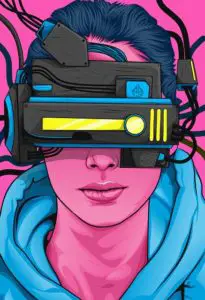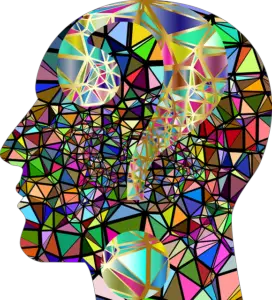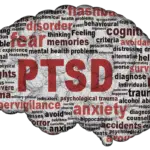 Virtual reality in mental health: Virtual reality (VR) has come a long way in the past few years. It is now being used in several industries, including mental health. VR can be used to help people with mental health issues by providing an immersive experience that can help them escape from their current situation. This can be very beneficial for people struggling with anxiety, depression, or PTSD. VR therapy can also improve cognitive function and social skills for people with an autism spectrum disorder.
Virtual reality in mental health: Virtual reality (VR) has come a long way in the past few years. It is now being used in several industries, including mental health. VR can be used to help people with mental health issues by providing an immersive experience that can help them escape from their current situation. This can be very beneficial for people struggling with anxiety, depression, or PTSD. VR therapy can also improve cognitive function and social skills for people with an autism spectrum disorder.
There are many different virtual reality platforms available, so there will be one that will fit your needs. If you are interested in using VR for mental health purposes, consult your therapist or doctor to see if it is correct.
Virtual reality is a powerful technology that can help improve mental health assessment. People can be taken to immersive, interactive virtual worlds fully controlled by the researcher or clinician. This can happen anywhere and at any time.
This ability is helpful for researchers and clinicians because it allows them to create more realistic and controlled environments. It also helps them improve personalization and engagement and collect real-time, automated data in real-world settings.
However, when using VR for mental health assessment, some issues need to be considered, such as cost and access, building a body of evidence, technical challenges, and ethical implications.
Cost and access are important considerations when using VR for mental health assessment. VR equipment can be expensive, and not all people have access to it. Additionally, some people may not be able to tolerate the immersive nature of VR or may have difficulty understanding how to use the technology.
Building a body of evidence is another consideration when using VR for mental health assessment. Currently, there is limited research on VR use for mental health assessment, and more research is needed to determine the effectiveness of VR for this purpose.
Technical challenges can also be a concern when using VR for mental health assessment. The technology itself is still in its early stages and may be challenging to use or require special training. Additionally, the data collected using VR may be difficult to interpret.
Ethical implications are also a concern when using VR for mental health assessment. For example, researchers and clinicians need to consider the privacy of participants and the potential for inducing anxiety or other negative emotions. Additionally, people with certain mental disorders may be at risk of harming themselves or others while using VR.
Table of Contents
Benefits of virtual reality in mental health
The benefits of virtual reality for mental health assessment are that it can generate real-world experiences that are highly controlled and accurate. VR can overcome many limitations of traditional assessments, such as cost, time, location, and mobility.
 Research has shown that VR-based assessments can be just as good as assessments done in the real world. VR also gives researchers access to situations and experiences that were hard to get before. For example, VR has been used in neuroimaging research to study how the brain works in real-world situations, which was not possible before from inside the scanner.
Research has shown that VR-based assessments can be just as good as assessments done in the real world. VR also gives researchers access to situations and experiences that were hard to get before. For example, VR has been used in neuroimaging research to study how the brain works in real-world situations, which was not possible before from inside the scanner.
Also, because of recent changes, VR is now completely mobile, so assessments don’t have to occur in a clinic or lab, and instead, people can access them remotely. The idea that automated assessments could be done in people’s homes without the help of a clinician is an exciting way to improve efficiency, make services more accessible, and cut costs.
Virtual reality in Mental Health – Does VR enhance ecological validity
- VR has become more immersive, making it possible to test in ways that are more like what happens in real life.
- Research has shown repeatedly that people react to virtual environments as if they were in real life.
- It is known that being in a virtual environment can cause changes in your body that are similar to how you feel in real life.
- A meta-analysis of nine randomized, controlled trials compared exposure to VR with exposure in real life as a treatment for phobias. Both treatments had the same effects.
- It has also been found that VR experiences make people act in predictable ways.
- These results show that one of the best things about VR for mental health is that it can simulate everyday experiences.
Virtual reality in Mental Health – Does VR allow the Control and manipulation of the virtual environment?
The answer to this question is Yes! Virtual reality (VR) allows for enhanced control and interactivity, which can help standardize otherwise dynamic variables. This can be extremely helpful in assessment experiences that need to be consistent over time and across individuals.
For example, VR’s ability to create virtual scenarios that expose participants to the same situation can be beneficial in studying the determinants of paranoid ideation in mental health patients. By controlling for all other variables, researchers can better understand each factor’s role in causing paranoid thoughts. VR technology is thus a powerful tool for psychological research.
Virtual reality in Mental Health – Person-centred care and personalization potential
Many people think of virtual reality (VR) as a way to escape from reality. However, VR can also create personalized experiences that are tailored to an individual’s specific needs and preferences. This is done by programming the VR environment to match the individual’s particular experiences. This customization is essential for treatment purposes, as it allows for a more effective exposure to the individual’s trauma.
Additionally, this tailoring is also helpful for assessment, as it provides a more precise understanding of the clinical events relevant to the individual. By tailoring VR experiences to the individual, we can create more effective and efficient treatments and better understand the psychological events pertinent to each person.
Virtual reality in Mental Health – Data capture benefits of VR
It is well known that using technology to capture data automatically has many benefits. Digital mental health has made a lot of progress in tracking symptoms and other clinically significant information over time with mobile apps. For example, people with schizophrenia can use VR to help them work on social skills, and there are app-based games that help people with Alzheimer’s disease improve their memory and language skills.
 Researchers are starting to think about how data from smartphone apps and virtual reality (VR) could be helpful in the clinic. For example, changes in symptoms have been linked to patterns in data from devices that track things like movement, speech, and location and could even be used to predict relapses in people with psychosis.
Researchers are starting to think about how data from smartphone apps and virtual reality (VR) could be helpful in the clinic. For example, changes in symptoms have been linked to patterns in data from devices that track things like movement, speech, and location and could even be used to predict relapses in people with psychosis.
Eye-tracking software is another example of how technology is used to gather mental health data. This software can track changes in someone’s visual attention, which has been linked to mental states such as fatigue, boredom, and anxiety. While there is still much research to be done in this area, it is clear that digital mental health has great potential to improve our understanding of mental illness and provide new ways to treat it.
Virtual reality in Mental Health – Increasing engagement
The traditional testing techniques conducted in mental health can be repetitive, laborious, and stressful. There is a lot of interest in replacing conventional tests with more interesting, useful, or fun ones. VR could further increase engagement with clinical evaluation by adding elements of digital games to the assessments.
For example, clinicians could use VR to immerse patients in scenarios that trigger anxiety or depression rather than simply asking patients to describe their symptoms. By understanding how patients react in these situations, clinicians would gain a more nuanced understanding of their condition.
Additionally, VR-based assessment could also track changes in symptoms over time, allowing clinicians to tailor treatment to the individual needs of each patient more effectively. Ultimately, VR has the potential to transform clinical evaluation in mental health, making it more engaging and effective.
Virtual reality in Mental Health – Further work required
Cost and access are significant barriers to the use of VR in mental health. The technology is expensive and not widely available. In addition, there is a lack of evidence to support the use of VR in mental health. There are ethical issues to consider, such as the potential for misuse of VR technology.
Finally, technical requirements are a limiting factor. For example, people with specific visual or auditory impairments may not be able to use VR headsets. Despite these limitations, VR has the potential to improve mental health in many ways. It is essential to be aware of these limitations and not get too caught up in the possibility of VR.
It is also important to remember that VR is not a cure-all. It can supplement other treatments, but it is not a replacement for traditional therapies. If you consider using VR to treat mental health symptoms, be sure to talk to a mental health professional first.
They can help you determine if VR is suitable for you and guide you through the process. VR should not be used to avoid addressing underlying mental health issues. It is crucial to address these issues to recover fully from mental illness. VR can be a valuable tool in this process, but it is not a substitute for traditional treatments.
Conclusion
Virtual reality has the potential to improve mental health in many ways. However, some limitations need to be considered. These limitations include the cost of VR technology, the lack of evidence to support its use, and the ethical concerns surrounding its misuse.
Despite these limitations, VR can be a valuable tool in treating mental illness. It is essential to talk to a mental health professional before using VR to ensure that it is right for you. VR should not be used to avoid addressing underlying mental health issues; instead, it can be used as a supplement to traditional treatments.
Reference
This post was inspired by an article by Imogen Bell and colleagues: Imogen H. Bell, Jennifer Nicholas, Mario Alvarez-Jimenez, Andrew Thompson & Lucia Valmaggia (2020) Virtual reality as a clinical tool in mental health research and practice, Dialogues in Clinical Neuroscience, 22:2, 169-177, DOI: 10.31887/DCNS.2020.22.2/lvalmaggia



